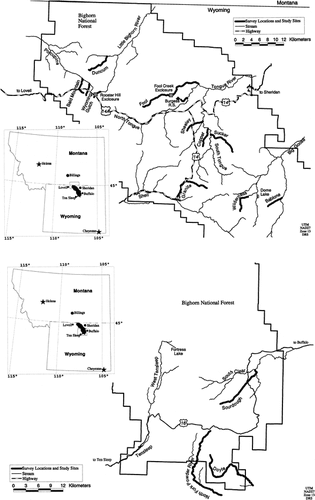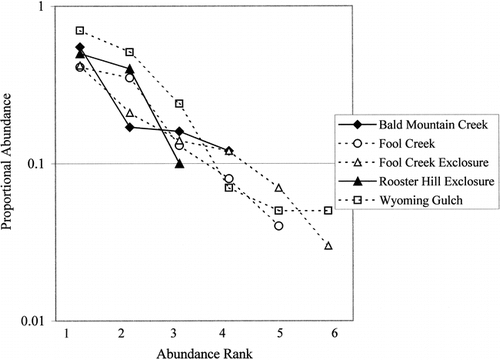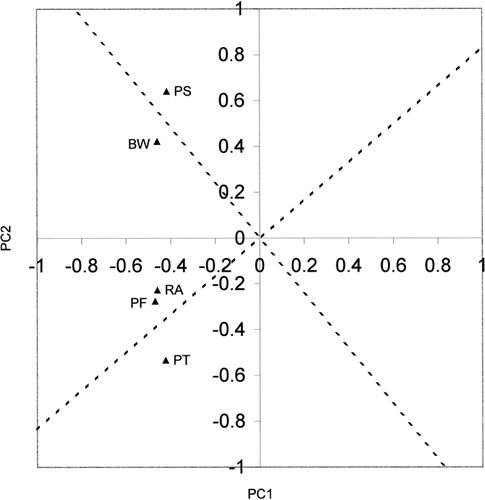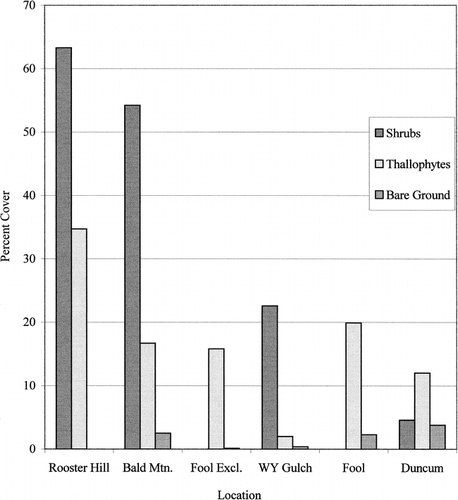Figures & data
FIGURE 1. Regional map of the Big Horn Mountains and trapping locations within the Big Horn Mountains (map by D. Scaife).

FIGURE 2. Relative abundance of all captured species at each location. While more water voles were captured at the Rooster Hill Exclosure and Bald Mountain Creek sites, fewer small mammal species were captured and the small mammal community was less diverse at these locations, as indicated by the shorter solid lines. The steep lines indicate that one species of small mammal dominated the captures at each location.

FIGURE 3. Principal components analysis of the four variables most likely to explain the relative abundance of water voles. PC1 is principal component number one; PC2 is principal component number 2; RA is the relative abundance of water voles; PF is percent cover by ferns; PT is the percent cover by thallophytes; PS is the percent cover by shrubs; and BW is the dry weight biomass (Graph by R. Smith).

FIGURE 4. Shrub, thallophyte, and bare ground cover percentages at each location. The two best sites for water vole captures, Rooster Hill Exclosure and Bald Mountain Creek, had the highest percent cover by shrubs (willows). The willows provided escape cover for water voles and protected stream banks from trampling by cattle.

Table 1 Matched sites studied for water voles in grazed and ungrazed habitats of the Big Horn Mountains. The permitted grazing dates and the number of mature cattle and yearlings at each site are the times and numbers allowed in the grazing permit. The Fool Creek exclosure effectively excluded cattle for only one year of this study.
Table 2 Comparison of water vole habitat variables on each of the streams studied. The Rooster Hill Exclosure seep and Bald Mountain Creek were the two best sites for water vole capture. Note that both have a willow/wet Carex riparian classification while the other creeks are classified differently.
Table 3 Summary of sampling effort, relative abundance, Shannon-Wiener Diversity index, and mean population density at each location for all years of the study
Table 4 Water vole capture summary from the matched grazed and ungrazed sites as well as body weight and reproductive maturity for each age class
Table 5 Mean percent cover ±SE, dry weight biomass, and linear regression coefficient of water vole relative abundance and plant life form